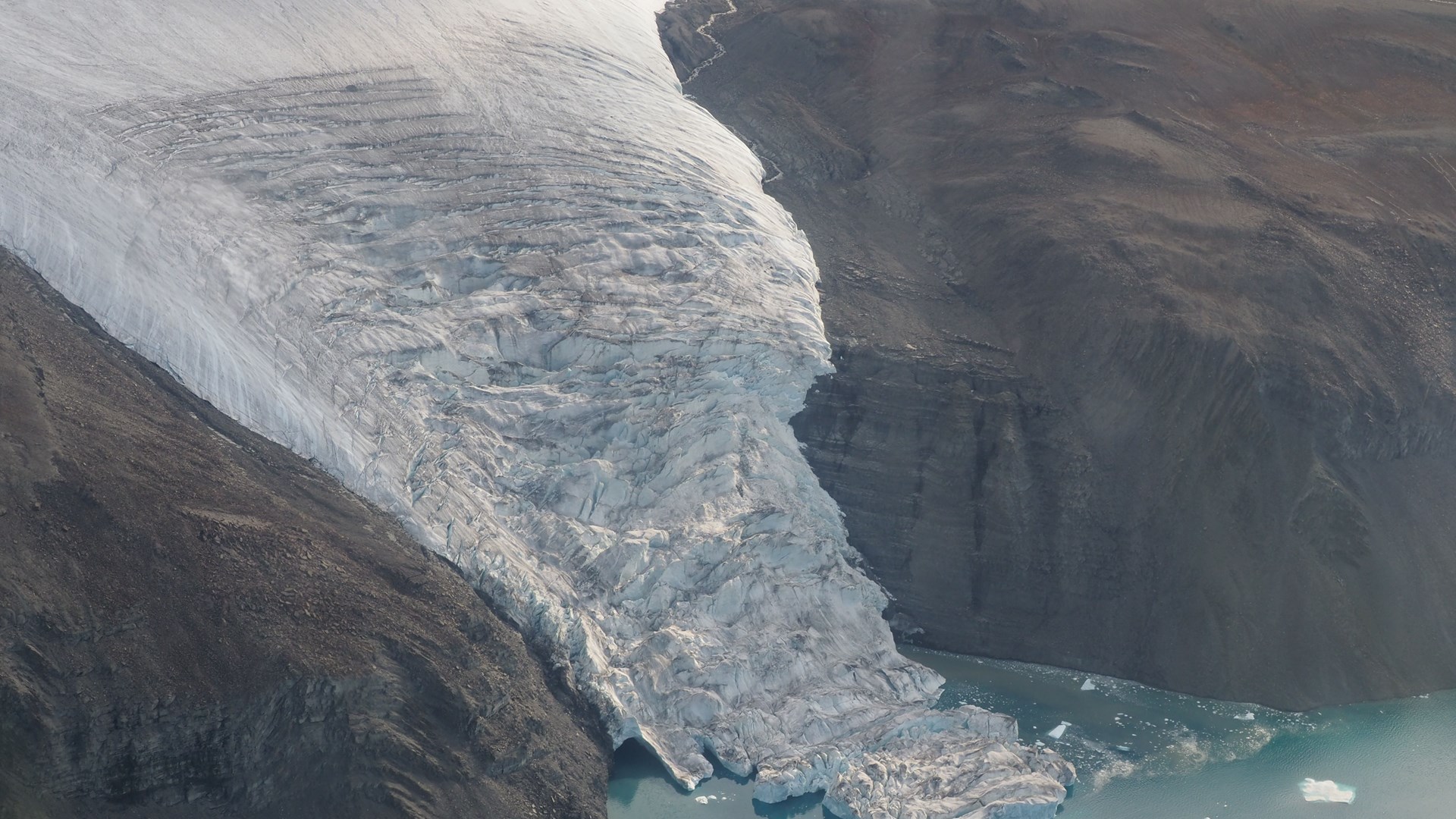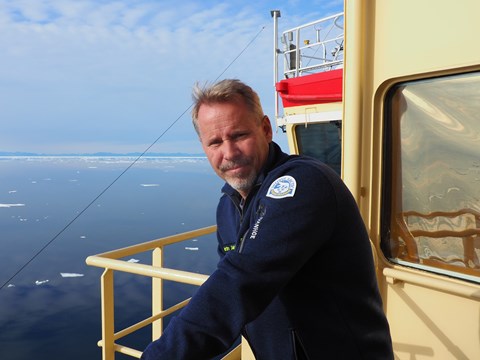An oceanic sill influences melting of one of Greenland’s glaciers

Greenland’s melting ice sheet has in recent years contributed with about 26 percent to the global sea-level rise according to published calculations, but how different glaciers are affected by climate change differs. Research from the Ryder Expedition with the icebreaker Oden in 2019, shows that a relatively shallow formation in the seabed in front of one of North Greenland’s largest glaciers, reduces the amount of warmer Atlantic waters that reach the glacier and melt it from below.
‒ In 1993, the glaciers in Greenland began to release more water to the world’s oceans. To be able to predict the rate at which the glaciers are melting, we need to know where they can be reached by warmer water ‒ and where they are more protected. Our research shows that the Ryder Glacier is partly protected by a bathymetric shoal, a sill, that shields the glacier from warmer water. When such a sill is located in a fjord it acts as a threshold for water flowing into the fjord, says Martin Jakobsson, Professor of Marine Geology and Geophysics at Stockholm University.
‒ When you look at different climate scenarios and add a sill in numerical modelling, it plays a huge role in how much the glaciers melt from below and thus how the future sea-level rise is affected. Today, there are large margins of error in global estimations because they contain too little marine data from large parts of the Arctic and Antarctic. Our research provides a basis for more accurate calculations and helps us understand how sensitive the glaciers are.
The Greenland ice sheet is a window to the ice age
As a marine scientist, Martin Jakobsson is interested in the parts of the glaciers that meet the sea. The Greenland ice sheet is the largest remaining ice sheet in the northern hemisphere. The research expedition to the Petermann Glacier in 2015 with the icebreaker Oden meant the start of what Martin Jakobsson hopes will be a survey of the entire marine sector of the northern part of the Greenland ice sheet, which to large extents still is unexplored.
Studying the Ryder Glacier became a natural next step. The Ryder Glacier is a marine outlet glacier that drains into the sea and is therefore very sensitive to oceanic change. The Sherard Osborn Fjord where Ryder Glacier drains had never been surveyed before, which was a huge challenge in itself as there were not bathymetric maps available that Captain Erik Andersson of Oden could use when entering. The expedition became Martin Jakobsson’s tenth expedition with the icebreaker Oden. As with several previous expeditions, he had the role as Chief Scientist.
‒ We lay with Oden at the fjord entrance while me and Erik flew over by helicopter to see if it was possible to get into Ryder Glacier or if the sea ice and all the large icebergs would prevent us. We were lucky with the sea-ice conditions this year, but the huge icebergs that have calved from the ice tongue of Ryder Glacier were a true challenge. They were up to 9 km wide and drifted around in the fjord, sometimes blocking the passage entirely. You always get overwhelmed when you enter an area like this. However, we could enter which meant that we could get data from a completely new area in the Arctic, says Martin Jakobsson.
Ocean currents bring warmer water
The Greenland ice sheet is affected not only by a generally warmer world ocean, but also by changes in ocean currents that in themselves do not have to be linked to climate change.
‒ The warmer Atlantic water enters between Svalbard and Greenland. Then it dives under the cold and relatively fresh surface water with the sea ice on top. As the Atlantic Ocean circulates around the Arctic along the continental shelf, it cools down slightly. Then the Atlantic water gets out again, but a certain part finds its way to the Greenlandic glaciers in the north. That warmer Atlantic water enter the fjord and reaches the Ryder Glacier. This was not known before and it is one of the expedition’s many discoveries.
Martin Jakobsson believes that there are still many unresolved questions about why glaciers behave the way they do, which makes them interesting to study. The next goal for the researchers is to go even further north along Greenland’s coast.
‒ We can only collect data by being on site, there are no other ways. And there is no other research group that can take it on so easily because an icebreaker with Oden’s capacity is needed, concludes Martin Jakobsson.

